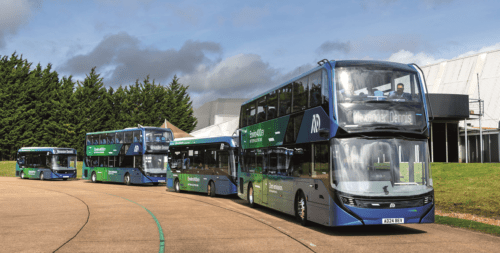
Kevin Carr pays a visit to Millbrook Proving Ground in Bedfordshire to test Alexander Dennis’ Next Generation Enviro100EV & Enviro400EV
There is somewhat of a buzz around the bus industry right now in connection to electric vehicles, with all the talk and speculation about their future and capabilities. So, it felt like great timing that I should be kindly invited by Alexander Dennis (ADL) to see and test its next-generation Enviro100EV single-deck and Enviro400EV double-deck buses.
On 21 March, I arrived at Millbrook Proving Ground, a large test track facility set in the Bedfordshire countryside, in a rather excited state to hear all about ADL’s next-generation products and take part in a comprehensive testing exercise.
The Millbrook track is vast with a large variety of testing possible including the Hill Route, Mile Straight, Steering Pad and Twist Humps to name just four. But, before it was time to get my hands on ADL’s new small single-deck bus and new double-decker, there was a headline presentation from ADL Group Engineering Director Chris Gall. He explained that ADL’s new products were designed, engineered, and tested in the UK. 220 in-house team members and 80 contractors cover the entire process from the first sketches to the finished product with the use of a dedicated test and development workshop in Farnborough.
[…]
By subscribing you will benefit from:
- Operator & Supplier Profiles
- Face-to-Face Interviews
- Lastest News
- Test Drives and Reviews
- Legal Updates
- Route Focus
- Industry Insider Opinions
- Passenger Perspective
- Vehicle Launches
- and much more!


